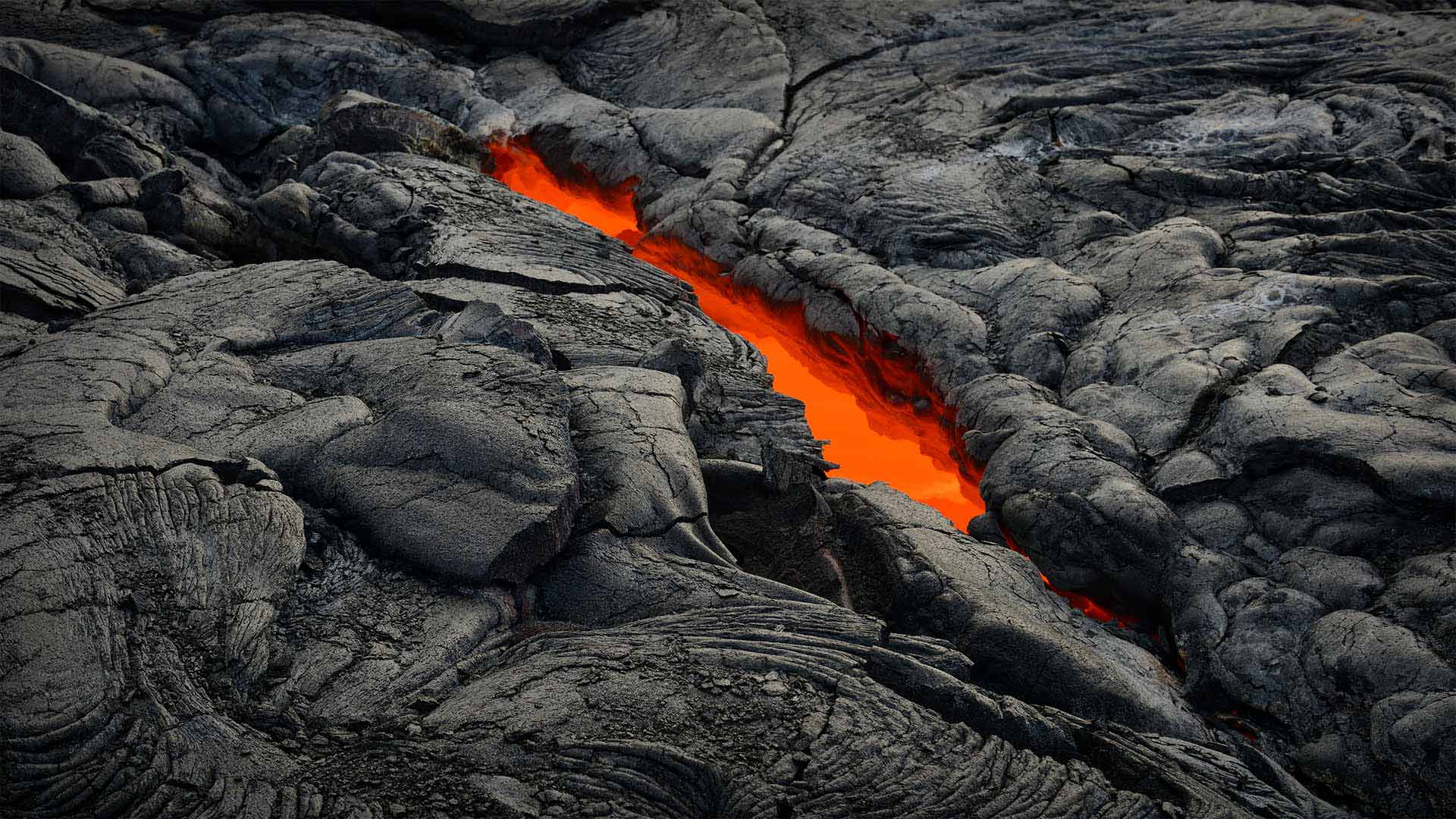漏出“天窗”的熔岩管,夏威夷火山国家公园 Skylight into an active lava tube, Hawaii Volcanoes National Park, Hawaii (© Tom Schwabel/Tandem Stills + Motion)

漏出“天窗”的熔岩管,夏威夷火山国家公园 Skylight into an active lava tube, Hawaii Volcanoes National Park, Hawaii (© Tom Schwabel/Tandem Stills + Motion)
世界上最活跃的火山 The most active volcano in the world
Hawai'i Volcanoes National Park at 106
The orange glow of a lava tube like the one pictured here is a frequent site on Hawaii's Kilauea, the youngest volcano on one of the youngest islands on Earth. In near constant eruption for the last 40 years, Kilauea is widely considered the most active volcano in the world and is the main attraction at Hawaii Volcanoes National Park, which was created on this day in 1916. The park, which was designated an International Biosphere Reserve and a World Heritage Site, also includes another active volcano, Mauna Loa, the world's most massive shield volcano—Mauna Loa last erupted in 1984. Together, they are among the most studied volcanoes in the world.
The volcanoes of the Big Island of Hawaii offer a real-time glimpse into the ongoing creation of the entire Hawaiian island chain, a process that has been underway for tens of millions of years. Hawaii as we know it owes its existence to a volcanic hotspot on the seafloor. Magma seeps from this hotspot and turns into solid rock. Once enough magma is extruded, the rock breaks the surface of the sea and becomes an island. The island continues to grow until the Pacific tectonic plate moves the island off the hotspot. The hotspot remains stationary, constantly creating new islands. In fact, the next Hawaiian island, named Loihi, is about 20 miles from Hawaii and 3,000 feet below the surface of the ocean. In less than 100,000 years, it is expected to replace the Big Island as the youngest island in the chain, and it too will have its turn at hosting visitors who buy timeshare condos.
Hawaiian religion credits the creation of Hawaii to Pele, the goddess of fire and volcanoes. Possessing a fiery temper and a passionate nature, she is said to make her home in the Halema'uma'u caldera here on Kilauea. From her volcano home she controls the flow of lava and frequency of eruptions. According to modern legend, she sometimes wanders near the park as an old woman wearing a red muumuu, with a white dog, as a warning that a new eruption is soon to come.
106号夏威夷火山国家公园
图中所示的橙色熔岩管辉光是夏威夷基拉韦厄岛上的一个常见地点,基拉韦耶岛是地球上最年轻岛屿之一上最年轻的火山。在过去40年中,基拉韦厄火山几乎持续喷发,被广泛认为是世界上最活跃的火山,是1916年创建的夏威夷火山国家公园的主要景点。该公园被指定为国际生物圈保护区和世界遗产,还包括另一座活火山,莫纳罗亚,世界上最大的盾状火山莫纳洛上次喷发是在1984年。加在一起,它们是世界上研究最多的火山之一。
夏威夷大岛上的火山可以实时观察整个夏威夷岛链的形成过程,这一过程已经持续了数千万年。众所周知,夏威夷的存在得益于海底的火山热点。岩浆从这个热点渗出,变成固体岩石。一旦足够的岩浆被挤出,岩石就会冲破海面,变成一个岛屿。该岛继续增长,直到太平洋构造板块将该岛移出热点。热点保持静止,不断形成新的岛屿。事实上,下一个夏威夷岛,名为Loihi,距离夏威夷约20英里,海拔3000英尺。预计在不到10万年的时间里,它将取代大岛,成为这一链条中最年轻的岛屿,轮到它接待购买分时度假公寓的游客。
夏威夷宗教将夏威夷的诞生归功于火与火山女神贝利。她脾气暴躁,生性热情,据说住在基拉韦厄岛的Halema'uma'u火山口。她在火山口的家中控制着熔岩的流动和喷发的频率。根据现代传说,她有时会在公园附近漫步,就像一个穿着红色muumuu的老妇人,带着一只白色的狗,作为新火山爆发即将到来的警告。
评论已关闭